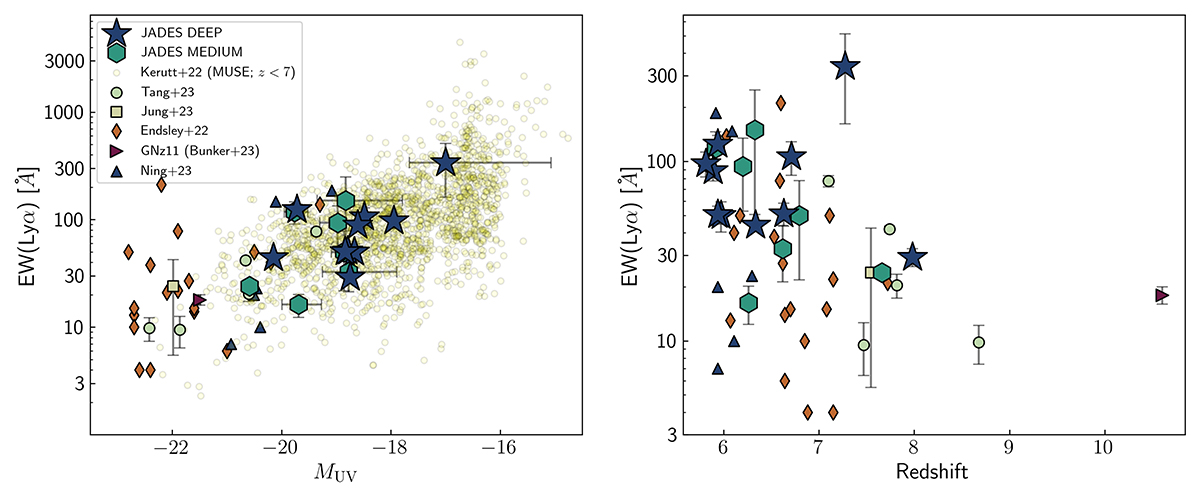Fig. 2.

Download original image
Distribution of EW(Lyα) and MUV (left) and redshift (right) of galaxies from our Deep and Medium observations. Also shown for comparison are measurements from the literature of LAEs at z ≳ 6 from Tang et al. (2023), Jung et al. (2023), Ning et al. (2023) and Endsley et al. (2023), as well as from GNz11 at z = 10.603 (Bunker et al. 2023b) (see Sect. 2.10 for a brief explanation about each of these data sets). In the left panel, we additionally show measurements from LAEs identified from the MUSE WIDE and DEEP surveys (Kerutt et al. 2022) at z < 5.7, which serve as a relevant ‘reference’ sample at redshifts where the IGM is not expected to impact the emergent Lyα emission significantly. We note here that several lensed LAEs also overlap with the UV magnitude distribution of our JADES sample (e.g. Hoag et al. 2019; Fuller et al. 2020; Bolan et al. 2022), which we do not show here. Our new LAE sample appears to be homogeneously mixed with the lower redshift LAE sample, indicating that the IGM may not be playing a significant role in affecting the Lyα emission reported in this paper, further stressing the presence of highly ionized regions surrounding these LAEs (see Witstok et al. 2024). The LAEs presented in this work are clearly much fainter in the UV than those that have been previously analysed in the literature at z ≳ 6. Our sample also includes the extremely high EW LAE with MUV ∼ −17.0 that was recently reported by Saxena et al. (2023).
Current usage metrics show cumulative count of Article Views (full-text article views including HTML views, PDF and ePub downloads, according to the available data) and Abstracts Views on Vision4Press platform.
Data correspond to usage on the plateform after 2015. The current usage metrics is available 48-96 hours after online publication and is updated daily on week days.
Initial download of the metrics may take a while.


